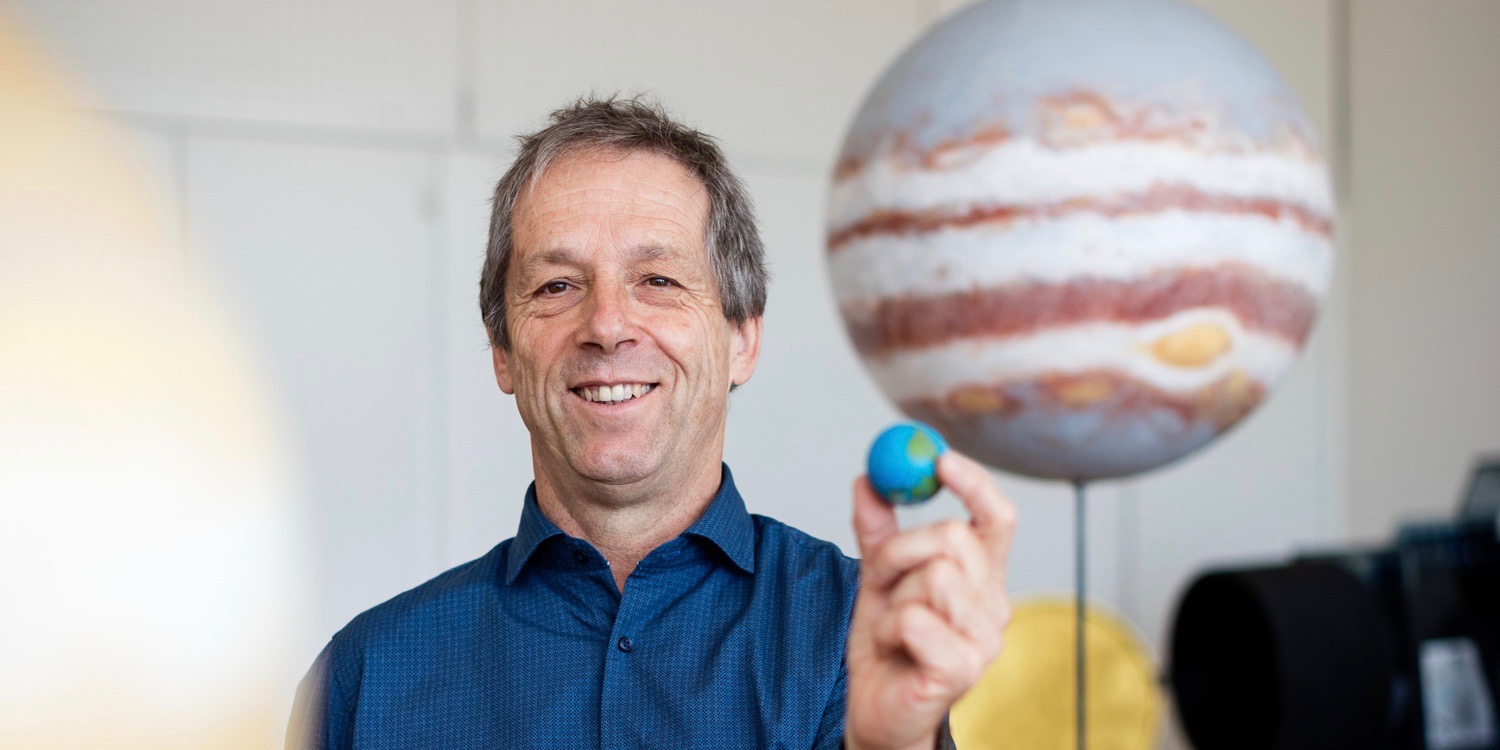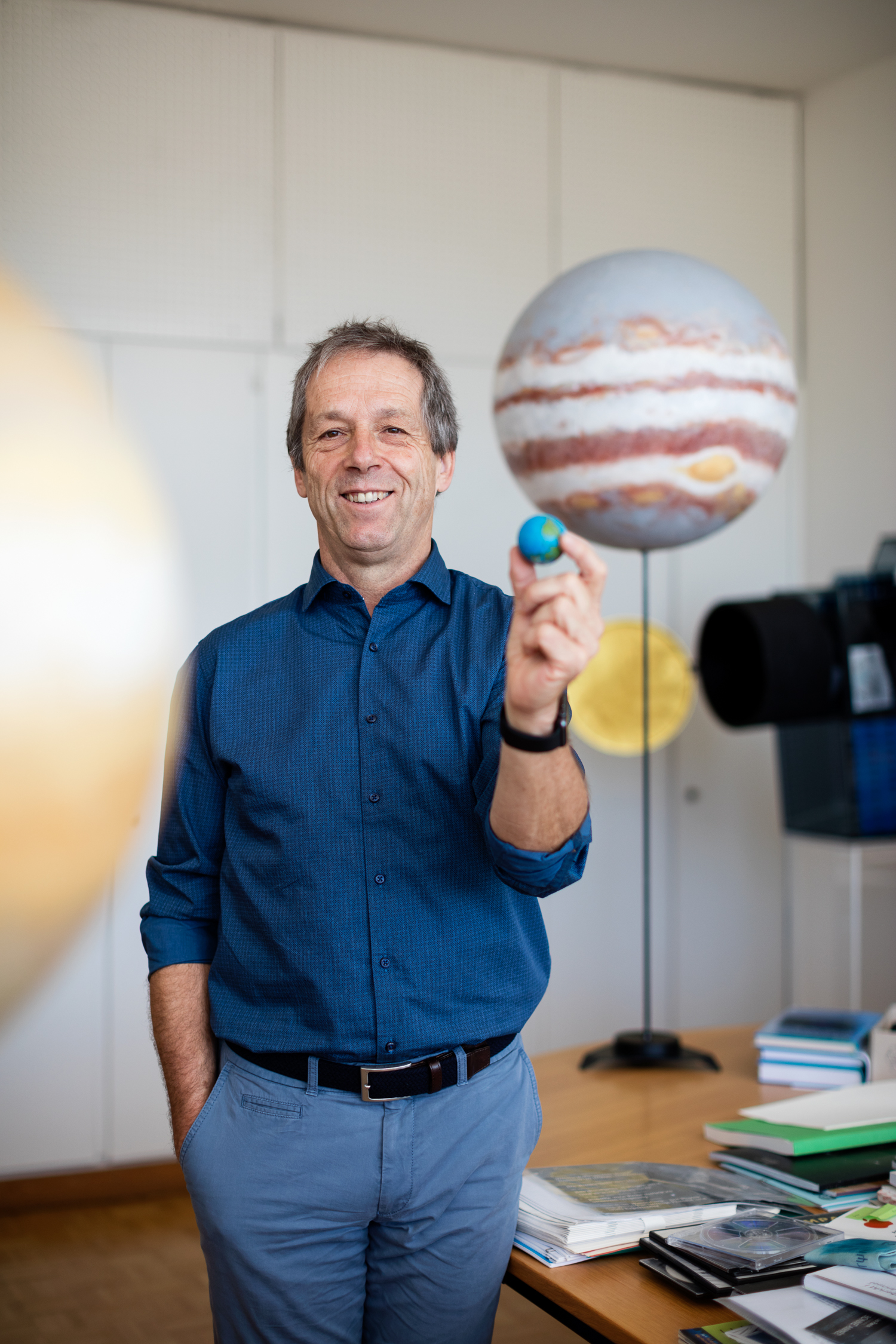ESPRESSO


Professor Willy Benz, Director of the NCCR PlanetS. (Photo Alessandro Della Bella)
Dear Reader,
As you will read in this edition of the Observer, we have said good-bye to ESPRESSO which is now on its way to the ESO Paranal Observatory near Antofagasta in Chile where it will be integrated into the VLT later this year. ESPRESSO, the development of which was led by Francesco Pepe from PlanetS, represents the ultimate in high-resolution high-stability spectrographs. It was built to achieve a precision in radial velocity measurements ten times better than HARPS the most successful planet finding machine that exists today.
Scientists are always eagerly awaiting new ground-breaking instruments as these generally trigger a flurry of new discoveries bringing our understanding of Nature a step further. But why would scientists want to build these instruments themselves since they can be, once in operation, accessed by the community through a well-defined proposal process? Why engaging in a development project that requires finding large amount of funding, the management of an international consortium, and complex hardware and software problems to solve (not to mention the countless sleepless nights worrying about them)?
My answer is that scientists are driven by challenges and performances. It starts with their frustration of being unable to answer an important scientific question because a suitable instrument is lacking. It follows by their desire to outperform everything existing to be in a unique position to answer the question. The result is often breakthrough new instrumentation that pushed existing technology to its limits or even beyond.
While managing such large experimental projects carries countless difficulties, the success comes with a huge reward that outweighs everything: privileged knowledge of the data and to their access over a period of time. On a space mission or a large telescope for which time is extremely precious and competition fierce, such an access provides a true edge…
At PlanetS, we are involved in a number of hardware projects (ESPRESSO, NIRPS, ERIS, CHEOPS, PLATO, METIS, HiRES to list a few of their bizarre acronyms…) about which we report regularly in the Observer. Now you know that we engage in these projects not just because we like sleepless nights (!) but because we are frustrated not to be able to answer important scientific questions. It is the scientists’ way to raise to the challenge!
With best wishes,

Willy Benz
Director NCCR PlanetS
Categories: External Newsletter

